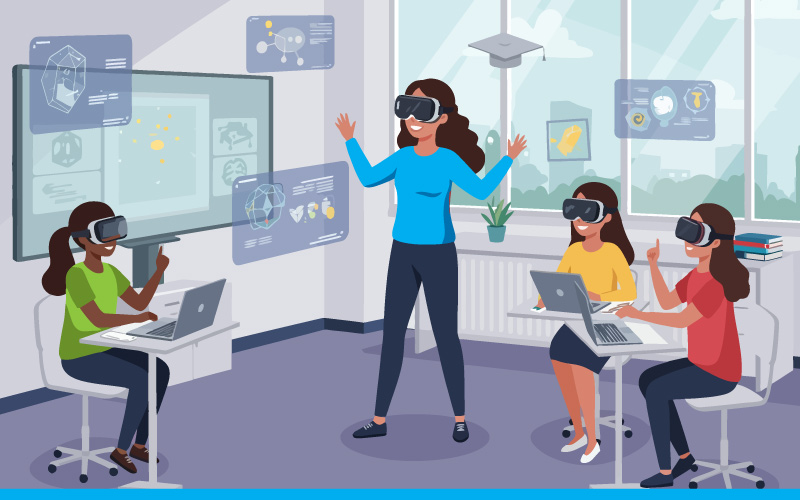Enter gamification, the secret sauce that is making STEM education fun, interactive, and yes, even habit-forming. Rather than reducing STEM topics into a dry compendium of facts, gamification makes them an experience, where students become problem-solvers of real-life issues, rival each other in friendly competition, work together towards a common goal, and construct.
Gamification, however, is not only about points, badges, and done. It’s about the use of game mechanics to influence curiosity, critical thinking, and profound comprehension.
So, let’s get into the why gamification is effective, the most effective strategies to do it, and how we can design a STEM eLearning experience that has students coming back for more.

Why Gamification Works in STEM eLearning
STEM subjects can sometimes feel abstract and intimidating, formulas, theories, and calculations don’t always translate into something a student can see or experience.
Gamification solves this by:
-
Making learning interactive: Rather than passively receiving information, students are dynamic actors in quests, challenges, and simulations.
-
Boosting motivation: Points, achievements, and progress bars reinforce learning with continuous feedback, preventing students from giving up.
-
Encouraging problem-solving: Most gamification strategies induce students to experiment, think abstractly, and plan ahead.
-
Building collaboration: Multi-player and co-operative challenges promote cooperative learning and partnership.
Research backs this up. A study published in Computers & Education found that students in gamified environments performed 20% better on assessments and showed 40% higher engagement levels than those in traditional settings.
The message? Gamification isn’t just about fun, It makes STEM learning more effective.

1. Rewarding Progress: Badges, Points, and Leaderboards
We all enjoy a bit of recognition. Whether it’s a fitness badge on a smartwatch or our name displayed prominently at the top of a leaderboard in a video game, achievements keep us going.
Gamification draws on this motivation by adding rewards and prestige to STEM education.
How to Implement Reward-Based Gamification
Badges & Achievements:
-
Award students digital badges for mastering new concepts.
-
Example: A “Circuit Wizard” badge for correctly wiring a virtual circuit.
Points & XP (Experience Points):
-
Assign points for completing lessons, solving problems, and engaging with content.
-
Example: Earn XP for debugging a code snippet.
Leaderboards & Friendly Competition:
-
Display rankings to encourage engagement and effort.
-
Example: A physics challenge leaderboard where students compete to design the most efficient bridge.
Real-World Example:
A gamified math platform gives students XP for each problem they solve. As they accumulate points, they “level up” from Apprentice Mathematician to Master Problem-Solver.

2. Creating STEM Quests & Real-World Challenges
Rather than presenting students with textbook problems, we can turn lessons into interactive missions and quests that mimic real-world STEM applications.
How to Use STEM Quests in eLearning
Science Missions:
-
Task students with identifying a mysterious microorganism in a virtual lab.
-
Example: A “Disease Detective” quest where students diagnose and cure a digital patient.
Coding Adventures:
-
Design a “Hackathon” challenge where students program a virtual AI to navigate a maze.
Engineering Puzzles:
-
Have students design an earthquake-proof building in a simulation.
Math Treasure Hunts:
-
Use escape room-style challenges where solving equations unlocks the next clue.
Real-World Example:
A space exploration STEM quest where students must calculate rocket trajectory, solve physics puzzles, and complete coding tasks to launch a virtual spaceship to Mars.

3. Using Simulations & Virtual Labs for Hands-On Learning
STEM thrives on experimentation, but not every school has access to expensive lab equipment. Virtual STEM simulations bring hands-on learning to life, without the safety hazards of, say, setting things on fire.
How to Integrate Simulations into Gamified STEM Learning
Chemistry Simulations:
-
Let students mix virtual compounds and observe chemical reactions.
Biology Virtual Labs:
-
Enable students to digitally dissect a frog, no real animals required.
Physics & Engineering Simulations:
-
Use interactive sandboxes to experiment with gravity, friction, and motion.
AI-Powered STEM Explorations:
-
Introduce Augmented Reality (AR) apps where students manipulate 3D DNA models.
Real-World Example:
A circuit-building game allows students to drag-and-drop virtual components to design functioning circuits, testing conductivity and resistance in real time.

4. Fostering Cooperation Through Multiplayer & Team Challenges
Gamification is not merely about competition; it’s also about collaboration. Peer-based STEM eLearning games foster peer learning, communication, and collaborative problem-solving.
How to Implement Multiplayer STEM Challenges
Co-op STEM Games:
-
Students work together to solve math problems, debug code, or complete physics challenges.
Global STEM Competitions:
-
Connect students across different schools for virtual science fairs and coding challenges.
Hackathons & STEM Showdowns:
-
Introduce time-based challenges where students solve STEM puzzles under pressure.
Real-World Example:
A global “Climate Change STEM Challenge” where students worldwide propose solutions for reducing carbon footprints in virtual city simulations.

5. Storytelling & Narrative-Driven STEM Learning
Children adore stories. Using storytelling as part of STEM instruction makes learning interactive and interactive.
How to Use Storytelling in Gamified STEM Learning
Math Mystery Games:
-
Solve algebraic equations to crack secret codes in a detective storyline.
Sci-Fi Engineering Quests:
-
Help a lost astronaut rebuild their spaceship using physics principles.
Medical Science Simulations:
-
Play as a disease detective, diagnosing patients based on biological data.
Real-World Example:
A “Save the Coral Reefs” game where students use real oceanography data to develop conservation solutions, applying STEM skills in an engaging, real-world context.

Making STEM Learning Addictive (In a Good Way)
Gamification of STEM learning is not so much about adding games, it’s about using game design thinking to create motivating and meaningful learning experiences. Badges, points, and leaderboards motivate by rewarding effort, and quests and real-world problems make lessons into exciting adventures. Simulations and virtual labs offer hands-on learning that brings tough STEM concepts to life, and the addition of multiplayer and storytelling makes it more interesting by fostering collaboration and curiosity.
At Mitr Learning & Media, we have expertise in creating gamified STEM eLearning experiences that are engaging, interactive, and effective. If you require customized gamified courses, interactive STEM simulations, or virtual labs, we can assist you.
Let’s collaborate and make gamified STEM education come alive! Contact us today.

What’s Next?
Want to learn more about designing effective STEM eLearning content? Check out these related blogs:
- Understanding the K12 Learner: Creating Age-Appropriate STEM Content
- Harnessing Visual Storytelling to Simplify Complex STEM Topics
- The Science of Engagement: What Makes STEM Content Effective in K12?
- Designing Interactive eLearning Content for STEM Education in K12 Schools
- Adapting STEM eLearning Content for Multilingual and Diverse Classrooms









